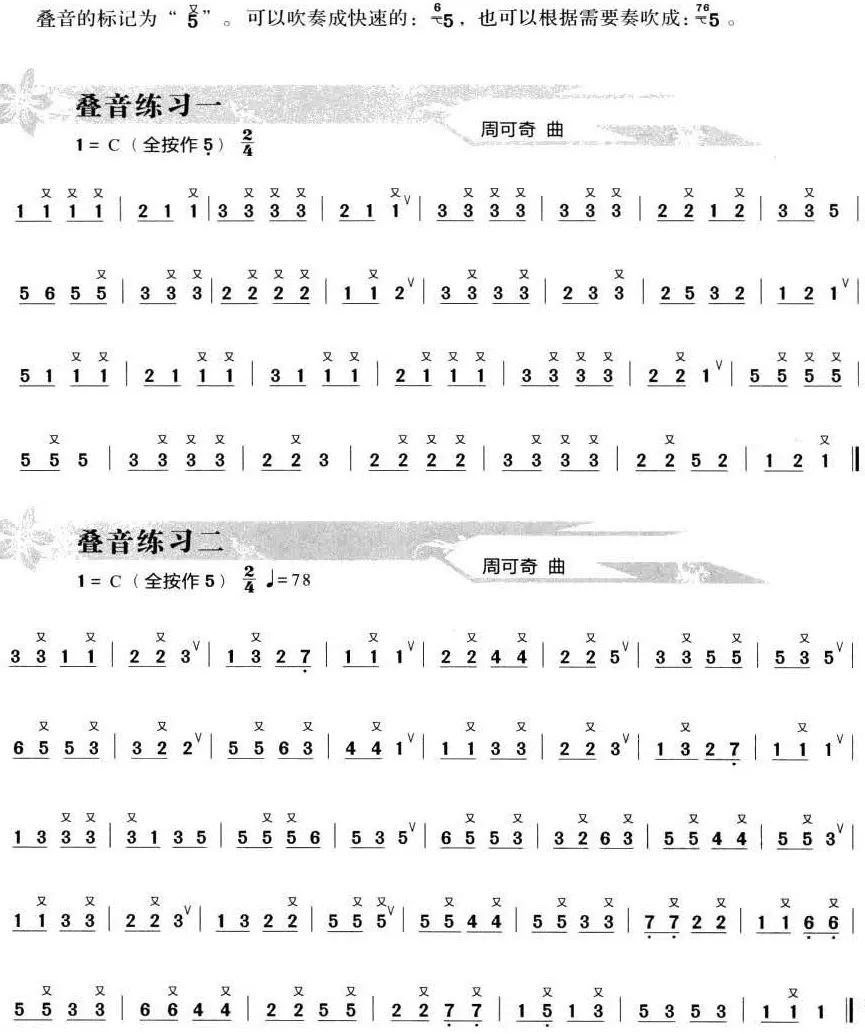Duplication skills and etudes of cucurbit flute
Hulusi duplication is to play a decorative role through one or several sounds. This technique is relatively common. Duplication is mainly played through the agile movements of fingers, and the sound hole and adjacent or spaced sound holes are pressed quickly and accurately . The overlapping sound is a very fast upper appoggiation, which is the overlapping of several sounds such as the second, third, and fourth with the original sound. The difference between doubling and beating is that punching is a pattern in which one ornamental primary sound is quickly produced, while a doubled sound is a sound pattern that quickly produces two or more decorative natural sounds.
The effect of the overlapping sound is different from that of the calendar sound. The tone levels of the calendar sound are very clear, while the double sound is still dominated by the original sound, and the effect is "the decorative sound that cannot be heard but enriches the original sound".
The doubling symbols are similar and the doubling sounds are played with the opposite sound. Hitting is to add the lower second, and the doubling is to add the upper second or third. For example, playing 1 to 2, we add a very short 3 in the middle, such as playing 1 to 3, We add a very short 5 in the middle, and the doubling can also break the chorus. Duplication is mainly to add flowers to the melody, making the music more distinctive, dynamic, and icing on the cake. The use of duplication is very flexible, and can be used according to the style of the music or the feeling of the music.
The double sound mark is a "you" character, which is actually the one at the top of the overlapping stack. Duplicate marks are a very common technique in cucurbit playing.
Duplicate Marks and Played Duplicate Effects

For example, for a single note 6, after writing it as a doubling symbol, there is a second above him before the 6 appears, that is, the 6 plus the doubling is actually 7 6.
Duplicate sounds generally do not exist alone in the performance of cucurbit flute. It usually occurs when the scale goes up, that is to say, when the sound goes from low to high, it may be used at this time. For example, when the scale is normal, 5 and 6 only have these two notes. After adding the overlap, the double note used on the 6 note becomes 5 and 76.
When practicing overlapping sounds, you can start with slow practice, and then take the above 5 and 6 as examples, and add a sound 7 in the middle after adding the overlapping sound. The duration of this 7 is very short. If the fingers are not so flexible at the beginning of the exercise, you can lengthen the duration and slowly reduce the duration, and finally turn it into a flashing effect. Even if the practice is successful. Please watch the video for specific performance effects.
Next, let's take a look at several common overtones in the entire scale, as well as his actual playing effect.

6 becomes 767 becomes 17
1 becomes 212 becomes 32
3 becomes 53
5 becomes 65
Finally, the duplication practice sheet is attached

 渝公网安备 50010702504639号
渝公网安备 50010702504639号